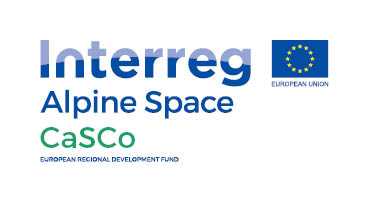Umweltlabel/en: Unterschied zwischen den Versionen
Helena (Diskussion | Beiträge) |
Helena (Diskussion | Beiträge) |
||
| Zeile 11: | Zeile 11: | ||
It is also important that we want to have European environmental labels. The current EU regulations should be considered a status quo and the basis for further development. In terms of environmental impact, eco-labels are stricter than DIN standards or EU Regulations (e.g. Due Diligence) but do not replace them. | It is also important that we want to have European environmental labels. The current EU regulations should be considered a status quo and the basis for further development. In terms of environmental impact, eco-labels are stricter than DIN standards or EU Regulations (e.g. Due Diligence) but do not replace them. | ||
| − | + | In procurement processes, the municipality cannot rely on the manufacturer’s statements but must require evidence. Environmental labels are not just a sign of the municipality’s sustainable procurement but also a great opportunity to control the ecological criteria in the tender. Only if these criteria are met, the desired environmental effect can be achieved. | |
Version vom 13. Mai 2020, 09:48 Uhr
Environmental labels are instrumental for the EU’s sustainable procurement processes. With products growing in variety and the supply chains becoming more global and less transparent, environmental labels are gaining in importance and their use is recommended by the EU.
An environmental label gives the municipality and the planning authority a guarantee of verifiable compliance and certification to the tender requirements without them having to search for and collect extensive documentation for every delivery or purchase made. Control is an essential element of sustainable procurement in Europe.
When running a tender, the most important thing for the municipality is to check what it can achieve in terms of sustainability. However, every environmental label focuses on different parameters. None of the labels covers all aspects of sustainability equally. That is why it would be sensible to regulate multiple environmental label criteria.
It is also important that we want to have European environmental labels. The current EU regulations should be considered a status quo and the basis for further development. In terms of environmental impact, eco-labels are stricter than DIN standards or EU Regulations (e.g. Due Diligence) but do not replace them.
In procurement processes, the municipality cannot rely on the manufacturer’s statements but must require evidence. Environmental labels are not just a sign of the municipality’s sustainable procurement but also a great opportunity to control the ecological criteria in the tender. Only if these criteria are met, the desired environmental effect can be achieved.
Vorteile von Umweltlabeln in der EU
Die „europäischen Umweltlabel“, das heißt die Label, die im Rechtsraum der EU entstanden sind und hier agieren halten die Vorgaben der EU ein, denn diese sind oft in den Labeln normkonform ausformuliert. Vielfach gehen diese Label über die EU Vorgaben aber auch noch hinaus. Bei den Labeln, die vor allem außerhalb des europäischen Rechtsraumes angewendet werden oder daher kommen, ist zu prüfen ob diese Produkte alle Europäischen Vorgaben einhalten wie z.B. die Europäische REACH Verordnung.
Beispiel 1: Zinnorganische Verbindungen sind nach REACH Verordnung in der EU verboten bzw. Grenzwerten unterlegt, in Amerika werden sie noch in der Produktion verwendet. Beispiel 2: PCP ist in Deutschland lange verboten in Asien noch vielfach in Produkten enthalten, auch solchen, die auf den europäischen Markt kommen).
Umweltlabel & Lebenszyklus
Umweltlabel setzen an unterschiedlichen Stellen im Produktlebensweg an. Manche bei den Vorketten, andere nur in der Nutzungsphase. Nahezu kein Label setzt bisher explizit an der Nachnutzung an, was auch sinnvoll ist, da die Möglichkeiten der Nachnutzung beispielsweise in fünfzig Jahren heute noch kaum feststehen. Dennoch hängt die Art und Weise und umweltverträglichkeit der Nachnutzung auch vom eingesetzten Material ab.
Die Bedeutung der Lebenszyklusphasen ist je nach Produktgruppe auch sehr unterschiedlich. Bei Produkten wie Baustoffen, Bauelementen, Materialien für den Innenausbau, Möbeln, Wandbelägen oder Böden usw. sind die Vorketten alles entscheidend für die Umweltbilanz des Produktes auch im Gebäudeverbund. Dies Produktgruppen sind in der Nutzungsphase ‚inert‘, verbrauchen also selbst keine Energie, Wasser oder Rohstoffe. Hier hat der Ausschreibende auf die Vorketten mit seinem Einkauf ganz wesentlich Einfluss auf den Stoffstrom und die Ökobilanz der Vorketten. Bei der Beschreibung der Umweltabel wird in dem nachfolgenden Kapitel auch auf die Relevanz der Umweltzeichen für die Lebenszyklusphasen eingegangen.
Relevante europäische Umwelt-Label
Im Alpenraum sind folgende Umweltlabel für Holz und Bauprodukte relevant. Diese Label werden von relevanten Portalen, Organisationen und Einrichtungen als für die nachhaltige Beschaffung empfehlenswert ausgewählt (alphabetisch):
Blauer Engel (blauerengel.de).
Cradle to Cradle (epea.com).
Europäisches Umweltzeichen (eu-ecolabel.de).
FSC (fsc.de).
HOLZ VON HIER (holz-von-hier.de).
NaturePlus (natureplus.org).
Nordic Swan (nordic-ecolabel.org).
Österreichisches Umweltzeichen (umweltzeichen.at).
PEFC (pefc.de).

